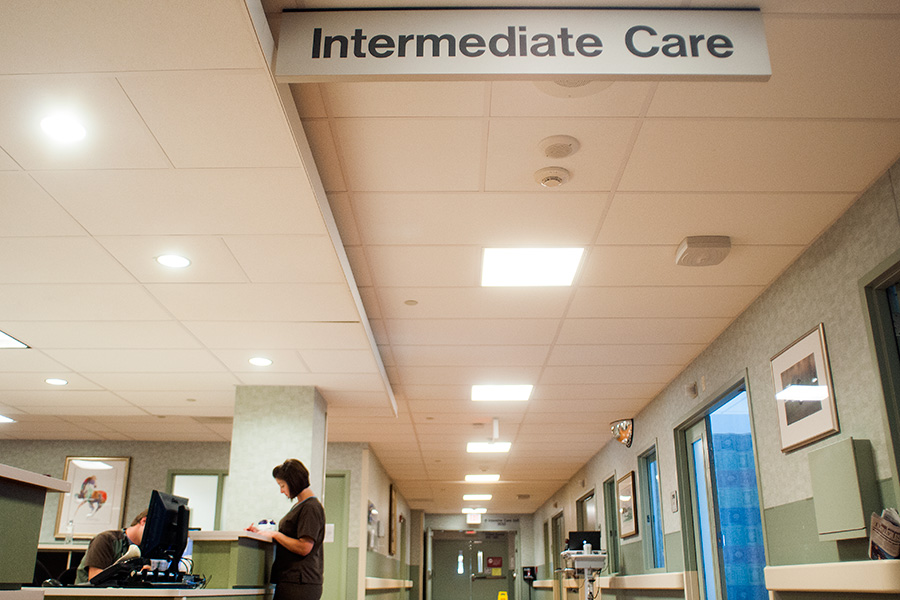Congress allowed a lapse in funding for the Children’s Health Insurance Program on Sept. 30, potentially affecting insurance for more than 20,000 children in Montana.
Nationwide, CHIP covers 9 million kids from lower- to middle-income families that otherwise earn too much to be eligible for Medicaid. In Montana, it’s part of the Department of Public Health and Human Services’ Healthy Montana Kids program, which covers 123,000 children across the state.
Of those kids, 23,000 are covered under CHIP, while the other 100,000 receive children’s Medicaid coverage.
Even though Congress let authorization for CHIP spending expire, states can still use some of their unspent federal dollars to continue their programs.
According to DPHHS spokesperson Jon Ebelt, the department has enough funding to keep CHIP alive through January 2018, but health insurance coverage for those kids is in jeopardy unless Congress reauthorizes the program.
Until then, states will not receive more funding.
But proponents of the program believe Congress will reauthorize it; on Wednesday, Oct. 4, Senate and House panels passed their own bills to restart federal funding again.
In the Senate, the bill is called Keeping Kids’ Insurance Dependable and Secure (KIDS Act). It has bipartisan support and extends CHIP funding for five years, earmarking $21 billion to $25 billion annually through fiscal year 2022.
The bill removes the Affordable Care Act provision that increased federal allotments for CHIP by 23 percent, with federal matching levels for states running from 88 percent to 100 percent. The Senate bill would continue the matching funds until 2019, after which the funds would fall to 11.5 percent in fiscal year 2020. Then they would be entirely eliminated by fiscal year 2021.
The House Energy and Commerce Committee debated the House’s version of this bill for six hours on Oct. 4, eventually passing it along party lines. One point of contention was the Republicans’ suggestion that to pay for CHIP, seniors earning more than $500,000 should be charged higher premiums for Medicare.
Montana Democratic U.S. Sen. Jon Tester is one of the KIDS Act sponsors, and said the state’s kids are paying for the national debate on health care reform.
“Washington dysfunction has reached new heights. Instead of working to ensure Montana kids can get the health coverage they need, Congress has wasted time on partisan health care bills that will raise rates and kick folks of their health plans,” Tester said. “Congress must act now to provide certainty to Montana families.”
Montana U.S. Sen. Steve Daines, a Republican, said CHIP is integral for many kids throughout the state and that there’s general agreement within Congress to continue funding the program.
“The Children’s Health Insurance Program provides important coverage to tens of thousands of Montana children, and consensus exists in Congress to reauthorize the program,” Daines said. “I am confident this will get done soon.”
While Montana’s CHIP funding isn’t scheduled to run out until next year if reauthorization doesn’t occur, Arizona, Minnesota, North Carolina, and the District of Columbia are expected to run out of federal funds sometime this year, according to the Medicaid and CHIP Payment and Access Commission.
If the program isn’t reauthorized, 27 states will exhaust federal funds for CHIP from January through March, followed by 19 more from April to June. Wyoming is the only state with enough funds to make it to July through September.
Projected Exhaustion of Federal CHIP Funds, Fiscal Year 2018
- info via MACPAC
First Quarter (October – December 2017)
Arizona, District of Columbia, Minnesota, North Carolina
Second Quarter (January – March 2018)
Alaska, Arkansas, California, Colorado, Connecticut, Delaware,
Florida, Hawaii, Idaho, Kansas, Kentucky, Louisiana,
Massachusetts, Mississippi, Missouri, Montana, Nevada, New
York, Ohio, Oregon, Pennsylvania, Rhode Island, South Dakota,
Utah, Vermont, Virginia, Washington
Third Quarter (April – June 2018)
Alabama, Georgia, Illinois, Indiana, Iowa, Maine, Michigan,
Maryland, Nebraska, New Hampshire, New Jersey, New Mexico,
North Dakota, Oklahoma, South Carolina, Tennessee, Texas, West
Virginia, Wisconsin
Fourth Quarter (July – September 2018)
Wyoming
